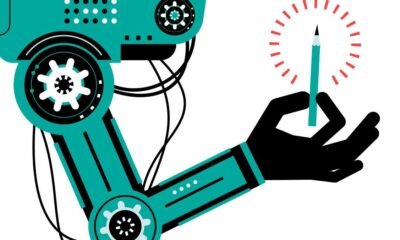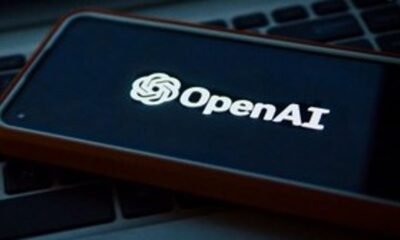Education
Benefits, Challenges, and Ethical Policies

As artificial intelligence permeates every corner of modern life, its integration into classrooms is accelerating at a pace that educators and policymakers are scrambling to match. In 2025, schools across the U.S. are not just experimenting with AI; they’re embedding it into core curricula, from personalized lesson plans to automated grading systems. This shift promises to democratize education, but it also raises thorny questions about equity, privacy, and the very role of human teachers.
Take, for instance, the experiences in central New York, where districts are piloting AI tools to tailor math tutorials to individual student needs. According to a recent report from Spectrum News, teachers in Syracuse are using platforms like adaptive learning software that adjusts difficulty in real-time, helping struggling students catch up without holding back high performers. Yet, this innovation isn’t without hurdles—educators report concerns over data security and the potential for AI to exacerbate achievement gaps if access to technology remains uneven.
Personalized Learning Takes Center Stage
The promise of AI lies in its ability to customize education like never before. Recent trends highlight how AI learning assistants are transforming student engagement, with systems that analyze learning styles and provide instant feedback. As detailed in a piece from Analytics Insight, these tools are expected to boost retention rates by up to 30% in 2025, drawing on vast datasets to predict and preempt academic stumbling blocks.
Industry insiders point to Microsoft’s latest initiatives, where AI copilots assist in lesson planning, freeing teachers to focus on mentorship. A Microsoft Special Report from earlier this year underscores that 65% of educators now view AI as essential for administrative tasks, allowing more time for creative instruction. However, this efficiency comes at a cost: some schools are grappling with over-reliance on algorithms, which could stifle critical thinking if not balanced properly.
Challenges in Equity and Ethics
Beneath the optimism, ethical dilemmas loom large. High school students are voicing frustrations, with one Atlantic contributor lamenting that AI is “demolishing” traditional education by enabling widespread cheating and diminishing analytical skills. In The Atlantic, a teenage writer argues that unchecked AI use is eroding the foundations of critical thinking, as students turn to chatbots for essays rather than grappling with ideas themselves.
On social platforms like X, sentiments echo these concerns; posts from educators and parents highlight fears that AI could widen divides, with affluent districts adopting cutting-edge tools while underfunded ones lag behind. One X user, reflecting broader trends, noted that AI’s personalized tutoring is “exciting” but must teach students to use it as a “thinking partner” rather than a crutch, aligning with discussions in EdTech Magazine about the need for robust guardrails.
Innovations in Special Education and Beyond
Looking ahead, AI’s role in special education is poised for explosive growth. Tools designed for neurodiverse learners, such as speech-to-text AI that adapts to individual disabilities, are gaining traction. K-12 Dive reports an uptick in localized policies, with districts like those in California customizing AI guidelines to ensure inclusivity, projecting a 25% increase in adoption by year’s end.
Meanwhile, global perspectives from events like UNESCO’s Digital Learning Week emphasize ethical AI deployment. As covered in updates from the European Forum of Technical and Vocational Education and Training, international stakeholders are advocating for frameworks that prioritize human oversight, warning against AI’s potential to homogenize cultural nuances in education.
The Teacher’s Evolving Role
Teachers themselves are at the forefront of this evolution, often leading the charge in AI integration. Insights from SmartBrief suggest that by 2025, educators will increasingly act as facilitators, using AI to handle rote tasks while honing students’ soft skills like collaboration and empathy—areas where machines still fall short.
Yet, resistance persists. X threads from users like those discussing AI-driven charter schools reveal a divide: some hail it as a “game-changer” for personalized instruction, while others worry about job displacement. A Medium article by Steven Boykey Sidley, as shared on X, posits that AI is “upending” traditional models, forcing a rethink of assessment methods to value originality over memorization.
Policy and Future Directions
Policymakers are responding with new guidelines. The U.S. Department of Education’s foundational report on AI, updated for 2025 contexts, stresses the importance of transparency in algorithms. Drawing from this document, experts recommend ongoing training for teachers to navigate AI’s complexities, ensuring it enhances rather than replaces human interaction.
In India, where online education markets are booming, AI is redefining learning platforms, as noted in NDTV coverage of Teachers’ Day trends. This global momentum suggests that by 2026, AI could be ubiquitous in classrooms, but only if addressed with foresight. For industry insiders, the key takeaway is clear: AI isn’t just a tool—it’s reshaping the essence of education, demanding vigilant adaptation to harness its benefits while mitigating risks.
Education
AI can play a critical role in HSA education

- Key Insight: Learn how AI-driven HSA guidance enables personalized benefits education at scale.
- What’s at Stake: Low HSA literacy risks underutilized tax-advantaged savings and increased employer administrative costs.
- Supporting Data: 69% of employees unclear on HSAs; over 50% unaware HSA funds are investable.
- Source: Bullets generated by AI with editorial review
HSAs can be a complicated benefit for employees to
Sixty-nine percent of employees were
“It was clear that benefits administrators and HR teams, as well as their employees, had questions about HSA rules,” says Shuki Licht, head of innovation and AI technology at HealthEquity. “When employees don’t understand their HSAs, they underutilize them, missing out on triple tax advantages and long-term savings opportunities. And for employers, this translates to lower engagement with the benefits they’re investing in and higher administrative costs from repetitive employee questions.”
Read more:
HSAnswers is available right on HealthEquity’s site for workers in any industry for free.
For example, Licht says an employee could ask a question like, ‘I’m turning 65 and signing up for Medicare, can I still contribute to my HSA this year?’ and receive a response immediately, rather than waiting for HR to research and respond. The AI is also
Unlike many AI chat tools on the market, HSAnswers doesn’t rely on public information — it’s built exclusively from HealthEquity’s own knowledge base that includes over 500 curated educational resources, ensuring that users only get reliable and contextually relevant answers whenever and wherever they need them.
Read more:
“What’s important is that we’re meeting employees where they are,” Licht says. “When they have a question at 8 PM on a Sunday about whether a medical expense is qualified, they don’t have to wait until Monday to call benefits administration.”
Benefit leaders need AI support too
While communicating with employees and addressing benefit concerns is a
Having employees engage with a reliable AI tool doesn’t just alleviate some of the administrative burden by eliminating the amount of employees seeking their help; they also have a use for the tech.
Read more:
“We’re even seeing usage from benefits administrators themselves who use it as a reference tool when their employees ask questions,” Licht says. “It ensures consistent, accurate information across the organization.”
As
“AI is going to be transformative for benefit education because it solves the core challenge of scale,” Licht says. “You have millions of employees with individual questions and situations, but limited human resources to provide personalized guidance. AI enables us to deliver that personalized education at scale.”
Education
Why AI’s true power in education isn’t about saving time

Key points:
- When we frame AI as a creative partner rather than a productivity tool, something shifts
- 5 ways to infuse AI into your classroom this school year
- In training educators on AI, don’t outsource the foundational work of teaching
- For more on AI’s role in education, visit eSN’s Digital Learning hub
As a former teacher, educator coach, and principal, I’ve witnessed countless edtech promises come and go. The latest refrain echoes through conference halls and staff meetings: “AI saves teachers X hours a week.” While time is undeniably precious in our profession, this narrative sells both educators and students short. After years of working at the intersection of pedagogy and technology, I’ve come to believe that if we only use AI to do the same things faster, we’re not innovating–we’re just optimizing yesterday.
The real opportunity: From efficiency to impact
Great teaching has never been about efficiency. It’s iterative, adaptive, and deeply human. Teachers read the room, adjust pace mid-lesson, and recognize that moment when understanding dawns in a student’s eyes. Yet most AI tools flatten this beautiful complexity into task lists: generate a worksheet, create a quiz, save time, done.
The question we should be asking isn’t, “How do I get through prep faster?” but rather, “What would I try if I didn’t have to start from scratch?”
Consider the pedagogical best practices we know drive student success: timely personalized feedback, inquiry-based learning, differentiation, regular formative assessments, and fostering metacognition. These are time-intensive practices that many educators struggle to implement consistently–not for lack of desire, but for lack of bandwidth.
AI as a pedagogical ally
When AI is truly designed for education–not just wrapped around a large language model–it becomes a pedagogical ally that reduces barriers to best practices. I recently observed a teacher who’d always wanted to create differentiated choice boards for her diverse learners but never had the time to build them. With AI-powered tools that understand learning progressions and can generate standards-aligned content variations, she transformed a single instructional idea into personalized pathways for 30 students in minutes, then spent her saved time having one-on-one conferences with struggling readers.
This is the multiplier effect. AI didn’t replace her professional judgment; it amplified her impact by removing the mechanical barriers to her pedagogical vision.
Creativity unleashed, not automated
The educators I work with already have innovative ideas, but often lack the time and resources to bring them to life. When we frame AI as a creative partner rather than a productivity tool, something shifts. Teachers begin asking: What if I could finally try project-based learning without spending weekends creating materials? What if I could provide immediate, specific feedback to every student, not just the few I can reach during class?
We’ve seen educators use AI to experiment with flipped classrooms, design escape room reviews, and create interactive scenarios that would have taken days to develop manually. The AI handles the heavy lifting of content generation, alignment, and interactivity, while teachers focus on what only they can do: inspire, connect, and guide.
Educators are the true catalysts
As we evaluate AI tools for our schools, we must look beyond time saved to amplified impact. Does the tool respect teaching’s complexity? Does it support iterative, adaptive instruction? Most importantly, does it free educators to do what they do best?
The catalysts for educational transformation have always been educators themselves. AI’s purpose isn’t to automate teaching, but to clear space for the creativity, experimentation, and human connection that define great pedagogy. When we embrace this vision, we move from doing the same things faster to doing transformative things we never thought possible.
Education
We cannot afford to dismantle Head Start, a program that builds futures, strengthens families and delivers proven returns

The first words I uttered after successfully defending my dissertation were, “Wow, what a ride. From Head Start to Ph.D.!” Saying them reminded me where it all began: sitting cross-legged with a picture book at the Westside Head Start Center, just a few blocks from my childhood home in Jackson, Mississippi.
I don’t remember every detail from those early years, but I remember the feeling: I was happy at Head Start. I remember the books, the music, the joy. That five-minute bus ride from our house to the Westside Center turned out to be the shortest distance between potential and achievement.
And my story is not unique. Every year, hundreds of thousands of children — kids whose names we may never know, though our futures depend on them — walk through Head Start’s doors. Like me, they find structure, literacy, curiosity and belonging.
For many families, Head Start is the first place outside the home where a child’s potential is nurtured and celebrated. Yet, this program that builds futures and strengthens families is now under threat, and it’s imperative that we protect it.
Years later, while training for high school cross-country meets, I’d run past the park next to the center and pause, flooded with memories. Head Start laid the foundation for everything that followed. It gave me structure, sparked my curiosity and built my early literacy skills. It even fed my short-lived obsession with chocolate milk.
More than that, Head Start made me feel seen and valued.
Related: A lot goes on in classrooms from kindergarten to high school. Keep up with our free weekly newsletter on K-12 education.
There’s a clear, unbroken line between the early lessons I learned at Head Start and the doctoral dissertation I defended decades later. Head Start didn’t just teach me my ABCs — it taught me that learning could be joyful, that I was capable and that I belonged in a classroom.
That belief carried me through elementary school, Yale and George Washington University and to a Ph.D. in public policy and public administration. Now, as part of my research at the Urban Institute, I’m working to expand access to high-quality early learning, because I know firsthand what a difference it makes.
Research backs up what my story shows: Investments in Head Start and high-quality early childhood education change lives by improving health and educational achievement in later years, and benefit the economy. Yet today there is growing skepticism about the value of Head Start, reflecting an ongoing reluctance to give early childhood education the respect it deserves.
If Head Start funding is cut, thousands of children — especially from communities like mine in Jackson, where families worked hard but opportunities were limited — could lose access to a program that helps level the playing field. These are the children of young parents and single parents, of working families who may not have many other options but still dare to dream big for their kids.
And that is why I am worried. Funding for Head Start has been under threat. Although President Donald Trump’s proposed fiscal 2026 budget would maintain Head Start funding at its current $12.3 billion, Project 2025, the influential conservative policy document, calls for eliminating the program. The administration recently announced that Head Start would no longer enroll undocumented children, which a group of Democratic attorneys general say will force some programs to close.
Related: Head Start is in turmoil
I feel compelled to speak out because, for our family, Head Start wasn’t just a preschool — it was the beginning of everything. For me, it meant a future I never could have imagined. For my mother, Head Start meant peace of mind — knowing her son was in a nurturing, educational environment during the critical developmental years. My mother, Nicole, brought character, heart and an unwavering belief in my potential — and Head Start helped carry that forward.
My mother was just 18 when she enrolled me in Head Start. “A young mother with big dreams and limited resources,” she recounted to me recently, adding that she had “showed up to an open house with a baby in my arms and hope in my heart.”
Soon afterward, Mrs. Helen Robinson, who was in charge of the Head Start in Jackson, entered our lives. She visited our home regularly, bringing books, activities and reassurance. A little yellow school bus picked me up each morning.
Head Start didn’t just support me, though. It also supported my mother and gave her tips and confidence. She took me to the library regularly and made sure I was always surrounded by books and learning materials that would challenge and inspire me.
It helped my mother and countless others like her gain insight into child development, early learning and what it means to advocate for their children’s future.
Twenty-five years after those early mornings when I climbed onto the Head Start bus, we both still think about how different our lives might have been without that opportunity. Head Start stood beside us, and that support changed our lives.
As we debate national priorities, we must ask ourselves: Can we afford to dismantle a program that builds futures, strengthens families and delivers proven returns?
My family provides living proof of Head Start’s power.
This isn’t just our story. It is the story of millions of others and could be the story of millions more if we choose to protect and invest in what works.
Travis Reginal holds a doctorate in public policy and public administration and is a graduate of the Head Start program, Yale University and George Washington University. He is a former Urban Institute researcher.
Contact the opinion editor at opinion@hechingerreport.org.
This story about the Head Start funding was produced by The Hechinger Report, a nonprofit, independent news organization focused on inequality and innovation in education. Sign up for Hechinger’s weekly newsletter.
-

 Business3 weeks ago
Business3 weeks agoThe Guardian view on Trump and the Fed: independence is no substitute for accountability | Editorial
-
Tools & Platforms1 month ago
Building Trust in Military AI Starts with Opening the Black Box – War on the Rocks
-

 Ethics & Policy2 months ago
Ethics & Policy2 months agoSDAIA Supports Saudi Arabia’s Leadership in Shaping Global AI Ethics, Policy, and Research – وكالة الأنباء السعودية
-

 Events & Conferences4 months ago
Events & Conferences4 months agoJourney to 1000 models: Scaling Instagram’s recommendation system
-

 Jobs & Careers3 months ago
Jobs & Careers3 months agoMumbai-based Perplexity Alternative Has 60k+ Users Without Funding
-

 Podcasts & Talks2 months ago
Podcasts & Talks2 months agoHappy 4th of July! 🎆 Made with Veo 3 in Gemini
-

 Education3 months ago
Education3 months agoVEX Robotics launches AI-powered classroom robotics system
-

 Education2 months ago
Education2 months agoMacron says UK and France have duty to tackle illegal migration ‘with humanity, solidarity and firmness’ – UK politics live | Politics
-

 Podcasts & Talks2 months ago
Podcasts & Talks2 months agoOpenAI 🤝 @teamganassi
-

 Funding & Business3 months ago
Funding & Business3 months agoKayak and Expedia race to build AI travel agents that turn social posts into itineraries

















